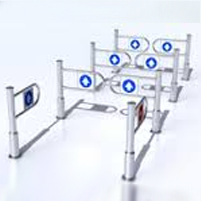 Over the last couple of years, Project Portfolio Office has assisted in the implementation of project management software across a large number of organisations, helping them to better manage their project flow via a project stage gate process. In most cases, the process is an automated, online approval mechanism that allows project offices or project stakeholders, typically sponsors and owners, to approve project gates.
Over the last couple of years, Project Portfolio Office has assisted in the implementation of project management software across a large number of organisations, helping them to better manage their project flow via a project stage gate process. In most cases, the process is an automated, online approval mechanism that allows project offices or project stakeholders, typically sponsors and owners, to approve project gates.
We have found that, regardless of industry sector – from financial services, product management, idea and product innovation and information technology, to telecommunications and even government – clients are incorporating project phase gate approvals into their project management software. In fact, the question we are most often asked is: “How do we introduce this into our project office?”
There are numerous factors that play a role in the best way to introduce this approach, including the maturity of the project environment, the purpose and mandate of the project office, and the involvement of sponsors and owners within the projects (to name just a few). However, the single greatest consideration is to determine why there is a need to manage the flow of projects between the gates.
If your answer is to ensure that the necessary governance requirements are being followed (most often the case) then the next question is: are these new governance requirements, or have project managers been running their projects under these governance requirements for a period of time?
If the governance requirements are new, it’s recommended that “soft” gates be implemented. However, if these governance requirements have been followed for a while, then the requirement is more than likely just the automation of a manual process into your project management software, in which case “hard” gates are recommended.
A hard gate forces the project manager to use the online approval mechanism in order to move a project through the gates, meaning that they are not able to change the phase themselves. Conversely, while a soft gate allows project managers to progress their own projects into new phases, it also provides the project office and stakeholders with the ability to track everything that does not align to the governance requirements within the project management software.
Hard gates are useful to control the governance process and allow the project stakeholders or project office (depending on who approves the gates) to ensure that projects are not moved to phases unless the governance requirements are followed. In most cases, hard gates are controlled by a project review committee, or similar forum, that meets on a periodic basis and then reviews the project and approves the gates. It’s most common that the project office then records the gate decisions taken at this forum in the project management software.
Soft gates are more useful to introduce and ease the project community into a new governance process. They provide project managers with the freedom to move projects through the gates themselves (which they probably did previously anyway), but also give the project office and stakeholders automated project governance audit showing which projects are aligned to the governance requirements and which are not.
In our experience, it’s common for clients to introduce soft gates for a period of time and then move to hard gates once the governance requirements are well understood and the new process and change have been adopted by the project community.
If the case of soft gates, a critical step to take, is the establishment of the decision-making forum and the subsequent regular meetings, the organisation will not be able to move to hard gates when ready. The only difference is that, in most cases, this forum will look at projects that have moved between phases since the last period and verify that the governance was followed. Problems and exceptions are then highlighted to the project managers within the project management software. It’s common for the project office to use automated governance reports to review a project’s alignment to governance requirements.
Introducing project phase gates is more of a behaviour change than a technical modification. Any good project and portfolio management (PPM) software should be able to support the functionality to manage phase gates, but getting the project community not only to understand the governance requirements and the need for the gates but to also support and adopt them, is much more difficult. Soft gates thus provide a cushion to introduce the required governance process and allow for an easier way to manage the behaviour changes.
Are you looking to introduce project phase gates in your environment? If so, try a free 30-day trial of Project Portfolio Office (PPO) today at www.go2ppo.com/try.php. PPO is an award winning online project portfolio management and collaboration application. PPO is simple, immediate, secure and affordable. PPO is flexible and can be configured to support any methodology. PPO project management software supports both hard and soft gates, and its approvals functionality allows for online automated approvals, as documented in the link below: http://support.ppolive.com/entries/20729241-Approvals


